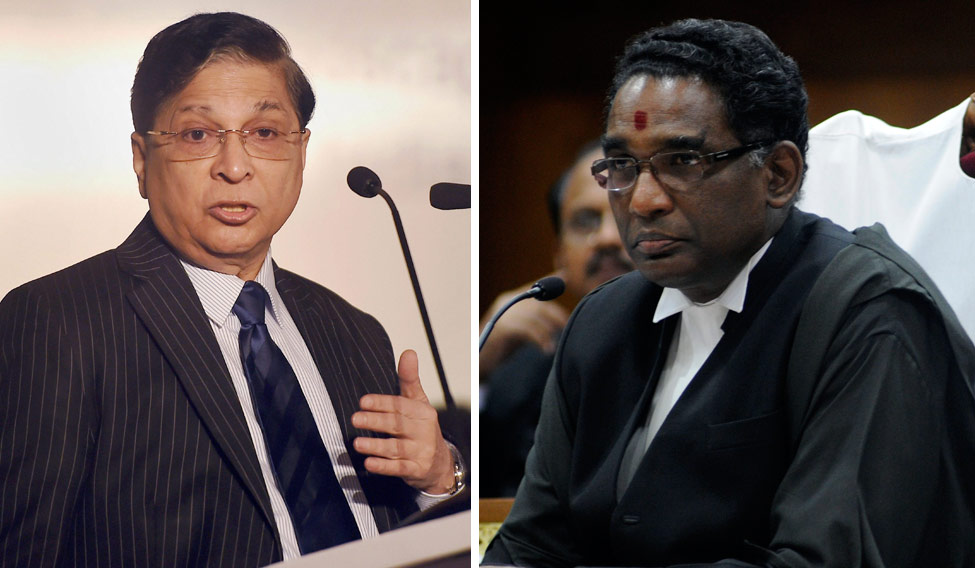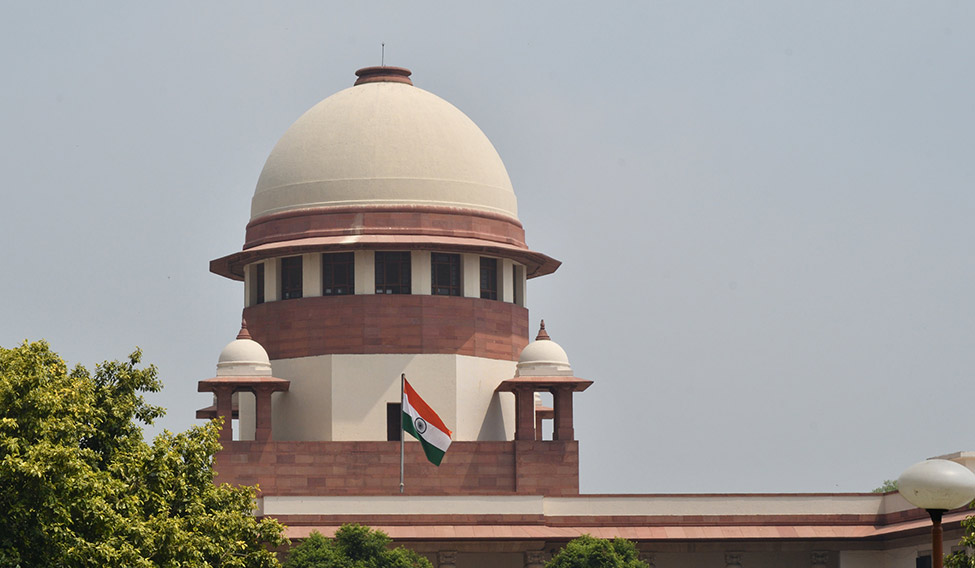Unprecedented’ is how legal experts have described the recent spat in the Supreme Court over petitions filed by senior lawyers Prashant Bhushan and Kamini Jaiswal seeking a special investigation team to probe allegations that judges have been bribed for admissions to medical colleges.
An uneasy truce has been struck, with a three-judge bench of the Supreme Court desisting from initiating contempt of court proceedings against Bhushan and Jaiswal. A semblance of calm has returned to the corridors of the court, but not before a few days of never-seen-before public display of differences of legal approach between judges, an infuriated chief justice asserting his authority and acrimonious exchanges between senior members of the bar.
Justice Arun Mishra, who was on the three-judge bench which examined the admissibility of the petitions filed by Bhushan and Jaiswal, noted that damage had already been done. “Everyone is doubting this court unnecessarily,” he observed. The two petitions, which were dismissed by the bench, exposed differences in the top judiciary and divided the bar. Attorney General K.K. Venugopal, in his capacity as a senior member of the bar, said in court that the developments “caused deep wounds on the judiciary and the bar” and “will take a long time to heal.” Former Supreme Court judge A.K. Patnaik, too, expressed concern. “It is not a question of who is right or who is wrong. Ultimately, the institution should not be affected. People have confidence in the institution, and that should not be affected,” he said.
Supreme Court advocate Gopal Sankaranarayanan said the credibility of the court had taken a beating. “Both lawyers and judges are parties in allowing this to happen. It is a matter that should have been sorted out informally behind closed doors,” he said.
The controversial petitions were about a case being investigated by the CBI, pertaining to alleged collusion between middlemen and judges in permitting admissions to several medical colleges. The CBI had on September 21 arrested I.M. Quddusi, a retired judge of the Orissa High Court, in the case. Quddusi had allegedly promised the promoters of Prasad Institute of Medical Sciences, Lucknow—one of the 46 medical colleges barred from admitting students for two years—to get a favourable judgment in the Supreme Court. The petitioners also sought recusal of Chief Justice of India Dipak Misra from a larger bench that would have heard the matter, citing “conflict of interest” as he had been hearing the case of debarment of medical institutions from admitting students.
Bhushan and his father, senior lawyer Shanti Bhushan, defended in court Justice Jasti Chelameswar’s decision to refer the matter to a five-judge bench, citing Article 142 of the Constitution, which gives a judge the power to do whatever it takes to secure justice. The decision angered Justice Misra, and his bench announced the formation of a new bench to hear the matter, overturning Justice Chelameswar’s decision. Justice Chelameswar, who is second only to Justice Misra in seniority, has ruffled feathers in the past as well. His was the lone dissenting judgment when the Supreme Court quashed the National Judicial Appointments Commission. He had written to the previous chief justice T.S. Thakur, recusing himself from meetings of the Supreme Court collegium, demanding greater transparency in appointment of judges.
 The decision by Justice Chelameswar (in pic, right) to refer the petition on the bribery scandal to a five-judge bench angered Justice Misra (left), who announced a new bench to hear the matter | PTI, Josekutty Panackal
The decision by Justice Chelameswar (in pic, right) to refer the petition on the bribery scandal to a five-judge bench angered Justice Misra (left), who announced a new bench to hear the matter | PTI, Josekutty Panackal
Moving swiftly after Chelameswar referred the petitions to a five-judge bench, Misra underlined his authority in deciding the roster of cases, issuing a circular that henceforth lawyers seeking hearing of new cases must do so before him.
“The petitions triggered the controversy. It is also worrying that Justice Chelameswar allowed one of the petitions and referred it to a higher bench,” said Vikas Singh, former additional solicitor general. As a result, mentioning of all matters would now happen before the chief justice, he said.
Justice Misra also took umbrage at the decision by a two-judge bench of Justices Kurian Joseph and R. Bhanumathi to refer a case pertaining to quota in promotions in government jobs to a Constitution Bench. The two judges left the constitution of the bench to the chief justice. Asked Justice Misra, “Can a two-judge bench directly refer a matter to a Constitution Bench?” He asked whether the matter should not have been referred first to a three-judge bench.
“The chief justice is first among equals. He has one vote on a bench. But keeping his position in mind, he has other responsibilities, which involve running the court, managing the roster and such affairs, which no other judge can claim,” said senior lawyer Lalit Bhasin. On the conflict of interest issue, Bhasin said it should be left to the good sense of the judge in question and could not be decided by another judge or bench.
The Supreme Court has desisted from initiating contempt of court proceedings against Bhushan and Jaiswal. It, however, saw contempt in the implied reference to the role of Justice Misra and other members of the higher judiciary none of whom were mentioned in the CBI’s first information report. By not initiating contempt proceedings, the court, said Sankaranarayanan, has done the right thing as matters have not been compounded.
Said the court, “Allegations are derogatory and contemptuous, but we are not initiating contempt as we hope better sense will prevail. Let us all work together for the welfare of this great institution.”
Vikas Singh said the controversy highlighted the need for urgent judicial reforms. “It is now easier to become a judge than a senior advocate. There is a need for reforms. Appointment of judges has to be made more transparent and objective. Also, a mechanism has to be put in place to deal with complaints of corruption against the judiciary,” he said.
The lawyers, too, have come under criticism. “Whatever differences there may be, the lawyers should not do anything that harms the reputation of the legal system,” said Ranbir Singh, vice chancellor, National Law University, Delhi. “They are officers of the court, and have a responsibility towards it.”







